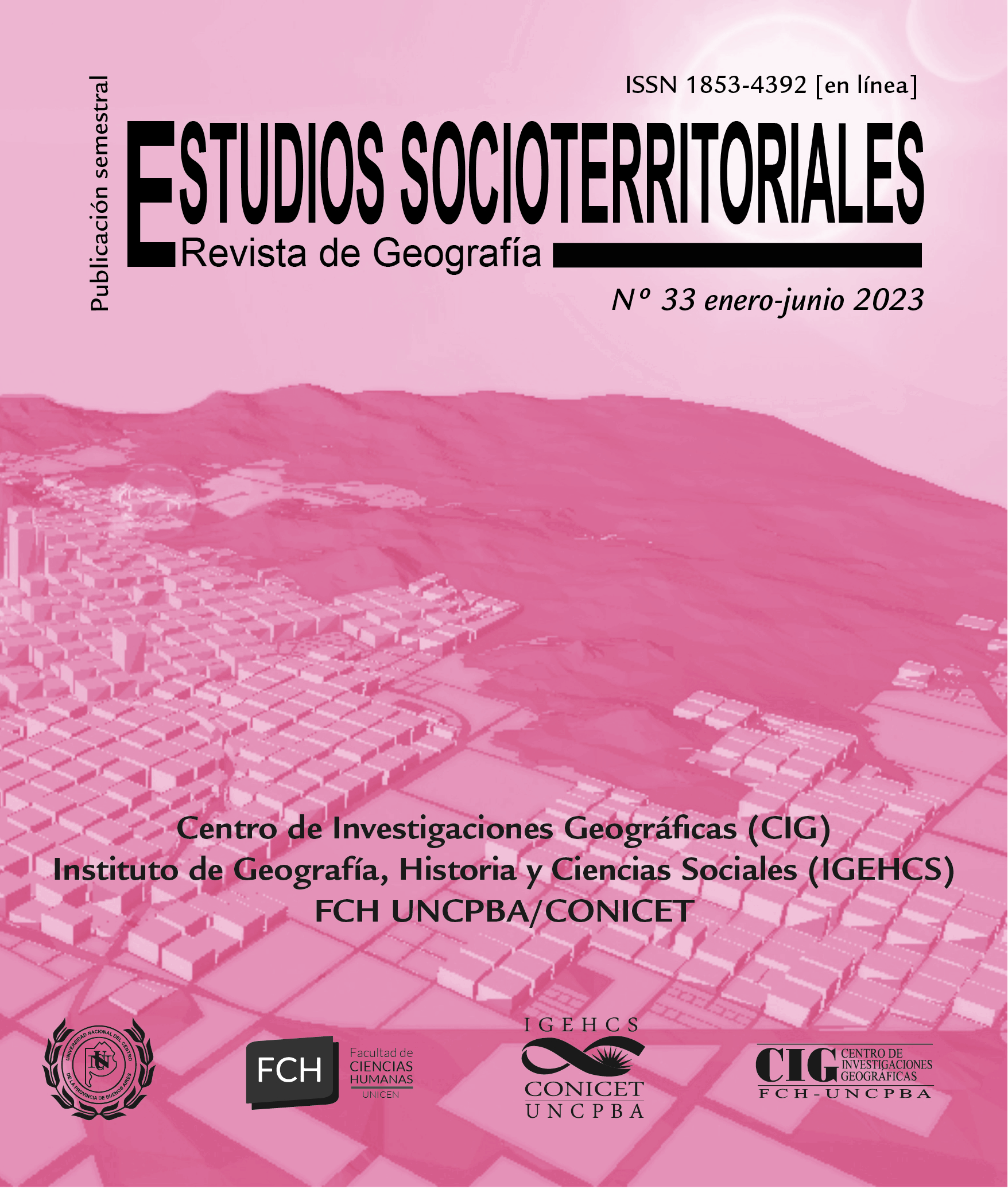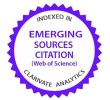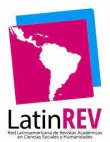Adultos mayores y unidades de salud en el Área Metropolitana de Toluca 2020-2022: accesibilidad y localización
DOI:
https://doi.org/10.37838/unicen/est.33-145Palabras clave:
Accesibilidad; Adulto mayor; CoberturaResumen
En esta investigación se estima la accesibilidad geográfica peatonal a unidades de atención médica de primer nivel con énfasis en los adultos mayores en el Área Metropolitana de Toluca (AMT), la quinta ciudad más poblada de México, y a partir de los resultados, se propone una solución locacional que mejore la accesibilidad, con eficiencia y equidad socioespacial. Para ello se utilizan dos métodos: el de área de cobertura flotante de dos pasos, y el de localización-asignación p-mediana. El análisis se realiza mediante la Estación de Inteligencia Territorial: CHRISTALLER®. Los problemas serios de accesibilidad entre los adultos mayores a las unidades médicas de primer nivel en el AMT, se pueden reducir notablemente si se combinan métodos sistemáticos de medición de accesibilidad y de localización-asignación.
Métricas
Citas
Baray, J., & Cliquet, G. (2013). Optimizing locations through a maximum covering/p-median hierarchical model: Maternity hospitals in France.
Journal of Business Research, 66(1), 127–132. https://doi.org/10.1016/j.jbusres.2012.09.003
Consejo Nacional de Población. (2017, 2 de junio). Envejecimiento en México. Gobierno de México.
https://www.gob.mx/conapo/articulos/envejecimiento-en-mexico
Delamater, P. L. (2013). Spatial accessibility in suboptimally configured health care systems: A modified two-step floating catchment area
(M2SFCA) metric. Health & Place, 24, 30–43. https://doi.org/10.1016/j.healthplace.2013.07.012
Enríquez-Reyna, M. C., Cruz-Quevedo, J. E., Celestino-Soto, M. I., Garza-Elizondo,M. E. y Salazar-González, B. C. (2013). Función ejecutiva,
velocidad de marcha y tarea doble en adultos mayores mexicanos. Revista Iberoamericana de Psicología Del Ejercicio y El Deporte, 8(2), 345–
https://www.redalyc.org/articulo.oa?id=311128824006
Envejecimiento y Salud (2022, 1 de octubre). Organización Mundial de la Salud. https://www.who.int/es/news-room/fact-sheets/detail/ageing-
and-health
Fajardo-Dolci, G., Gutiérrez, J. P. y García-Saisó, S. (2015). Acceso efectivo a los servicios de salud: operacionalizando la cobertura universal en
salud. Salud Publica de Mexico, 57(2), 180–186.
García-Peña, C., Bello-Chavolla, O. Y., Castrejón-Perez, R. C., Jácome-Maldonado, L. D., & Lozano-Juárez, L. R. (2022). Variability in case fatality
rate risk due to Covid-19 according to health services provider in Mexico City hospitals. Salud Pública de México, 64(2), 119–130.
https://doi.org/10.21149/12995
Garrocho C. y Vilchis Mata, I. (2021). Las Age-Friendly cities facilitan la movilidad de los adultos mayores. Korpus21, 1(2), 295–316.
Garrocho, C. y Campos, J. (2006). Un indicador de accesibilidad a unidades de servicios clave para ciudades mexicanas: fundamentos, diseño y
aplicación. Economía, Sociedad y Territorio, VI, 61. https://doi.org/10.22136/est002006262
Garrocho, C. y Campos, J. (Eds.). (2016). Segregación socioespacial de la población mayor en la Ciudad de México (1a. Edición). El Colegio
Mexiquense.
Garrocho, C., Chávez, T. y Álvarez, J. A. (Eds.). (2002). La Dimensión espacial de la competencia comercial (1st. Edition). El Colegio Mexiquense
A.C.
Garrocho, C., Chávez, T. y Jiménez, E. (2021). Autómata Celular Metro-NASZ: laboratorio experimental de expansión urbana. En CONAPO, La
situación demográfica de México (pp. 149–175). Consejo Nacional de Población.
Guagliardo, M. F. (2004). Spatial accessibility of primary care: concepts, methods and challenges. International Journal of Health Geographics,
(1), 3. https://doi.org/10.1186/1476-072X-3-3
Guida, C., & Carpentieri, G. (2021). Quality of life in the urban environment and primary health services for the elderly during the Covid-19
pandemic: An application to the city of Milan (Italy). Cities, 110, 103038. https://doi.org/10.1016/j.cities.2020.103038
Gwalani, H., Helsing, J., Alshammari, S. M., Tiwari, C., & Mikler, A. (2022). A Distributed Algorithm for Solving Large-scale p-median Problems
Using Expectation Maximization. https://doi.org/10.21203/rs.3.rs-2003020/v1
Instituto de Información e Investigación Geográfica, Estadística y Catastral del Estado de México. (2022). Catastro de predios Baldíos. IGECEM.
Instituto Nacional de Estadística y Geografía. (2020). Censo de Población y Vivienda. INEGI.
https://www.inegi.org.mx/programas/ccpv/2020/default.html#Microdatos
Jia, T., Tao, H., Qin, K., Wang, Y., Liu, C., & Gao, Q. (2014). Selecting the optimal healthcare centers with a modified P-median model: a visual
analytic perspective. International Journal of Health Geographics, 13(1), 42. https://doi.org/10.1186/1476-072X-13-42
Joseph, A. E., & Phillips, D. R. (Eds.). (1984). Accessibility and utilization: geographical perspectives on health care delivery (1st. Edition). Harper
& Row.
Kanuganti, S., Sarkar, A. K., & Singh, A. P. (2016). Quantifying Accessibility to Health Care Using Two-step Floating Catchment Area Method
(2SFCA): A Case Study in Rajasthan. Transportation Research Procedia, 17, 391–399. https://doi.org/10.1016/j.trpro.2016.11.080
Khan, A. A., & Bhardwaj, S. M. (1994). Access to Health Care. Evaluation & the Health Professions, 17(1), 60–76.
https://doi.org/10.1177/016327879401700104
Li, X., Zhao, Z., Zhu, X., & Wyatt, T. (2011). Covering models and optimization techniques for emergency response facility location and planning:
a review. Mathematical Methods of Operations Research, 74(3), 281–310. https://doi.org/10.1007/s00186-011-0363-4
Luo, W., & Wang, F. (2003). Measures of Spatial Accessibility to Health Care in a GIS Environment: Synthesis and a Case Study in the Chicago
Region. Environment and Planning B: Planning and Design, 30(6), 865–884. https://doi.org/10.1068/b29120
Luo, W., & Whippo, T. (2012). Variable catchment sizes for the two-step floating catchment area (2SFCA) method. Health & Place, 18(4), 789–
https://doi.org/10.1016/j.healthplace.2012.04.002
Luo, W., y Qi, Y. (2009). An enhanced two-step floating catchment area (E2SFCA) method for measuring spatial accessibility to primary care
physicians. Health & Place, 15(4), 1100–1107. https://doi.org/10.1016/j.healthplace.2009.06.002
McGrail, M. R. (2012). Spatial accessibility of primary health care utilising the two step floating catchment area method: an assessment of
recent improvements. International Journal of Health Geographics, 11, 50. https://doi.org/10.1186/1476-072X-11-50
Montes de Oca Zavala, V. (2010). Pensar la vejez y el envejecimiento en el México contemporáneo. Renglones, (62), 159–180.
Murad, A., Faruque, F., Naji, A., & Tiwari, A. (2021). Using the location-allocation p-median model for optimising locations for health care
centres in the city of Jeddah City, Saudi Arabia. Geospatial Health, 16(2). https://doi.org/10.4081/GH.2021.1002
Ngui, A. N., & Apparicio, P. (2011). Optimizing the two-step floating catchment area method for measuring spatial accessibility to medical
clinics in Montreal. BMC Health Services Research, 11, 166. https://doi.org/10.1186/1472-6963-11-166
O´Sullivan, A. (2019). Urban Economics (1st. Edition). McGraw-Hill.
Paez, A., Higgins, C. D., & Vivona, S. F. (2019). Demand and level of service inflation in Floating Catchment Area (FCA) methods. PLOS ONE,
(6), e0218773. https://doi.org/10.1371/journal.pone.0218773
Radke, J., & Mu, L. (2000). Spatial Decompositions, Modeling and Mapping Service Regions to Predict Access to Social Programs. Geographic
Information Sciences, 6(2), 105–112. https://doi.org/10.1080/10824000009480538
Ramos Peréz, D. y Garrocho, C. (2019). Análisis de la accesibilidad a servicios de la población mayor: el caso de los consultorios adyacentes a
farmacias en la Ciudad de México mediante el método de cobertura flotante de dos pasos [Tesis de maestría, El Colegio de México].
https://repositorio.colmex.mx/concern/theses/d504rk866?locale=es
Rybertt, C., Cuevas, S., Winkler, X., Lavados, P., y Martínez, S. (2015). Parámetros funcionales y su relación con la velocidad de marcha en
adultos mayores chilenos residentes en la comunidad. Biomédica, 35(2), 212–218. https://doi.org/10.7705/biomedica.v35i2.2571
Salud y derechos humanos (2017, 29 de diciembre). Organización Mundial de la Salud. https://www.who.int/es/news-room/fact-
sheets/detail/human-rights-and-health
Sansão Fontes, A. y Espósito Galarce, F. (2021). Urbanismo de Proximidad en Barcelona. Una ciudad saludable a 15 minutos del hogar. Planeo,
, 1–13.
Secretaría de Salud. (2021). CLUES Recursos en Salud Datos Abiertos. SSA.
http://www.dgis.salud.gob.mx/contenidos/basesdedatos/da_recursos_gobmx.html
Sgaravatti, A., Santos, D., Bermúdez, G. y Barboza, A. (2018). Velocidad de marcha del adulto mayor funcionalmente saludable. AnFaMed, 5(2),
–101. https://revistas.udelar.edu.uy/OJS/index.php/anfamed/article/view/531
Shao, Y., & Luo, W. (2022). Supply-demand adjusted two-steps floating catchment area (SDA-2SFCA) model for measuring spatial access to
health care. Social Science & Medicine, 296, 114727. https://doi.org/10.1016/j.socscimed.2022.114727
Silverman, B. W. (1986). Density estimation for statistics and data analysis. Chapman and Hall.
Tao, Z., Cheng, Y., & Liu, J. (2020). Hierarchical two-step floating catchment area (2SFCA) method: measuring the spatial accessibility to
hierarchical healthcare facilities in Shenzhen, China. International Journal for Equity in Health, 19, 164. https://doi.org/10.1186/s12939-020-
-7
Varela Pinedo, L., Ortiz Saavedra, P. J. y Chávez Jimeno, H. (2009). Velocidad de la marcha como indicador de fragilidad en adultos mayores de
la comunidad en Lima, Perú. Revista Española de Geriatría y Gerontología, 45(1), 22–25. https://doi.org/10.1016/j.regg.2009.07.011
Wan, N., Zou, B., & Sternberg, T. (2012). A three-step floating catchment area method for analyzing spatial access to health services.
International Journal of Geographical Information Science, 26(6), 1073–1089. https://doi.org/10.1080/13658816.2011.624987
Wang, F. (2018). Inverted Two-Step Floating Catchment Area Method for Measuring Facility Crowdedness. The Professional Geographer, 70(2),
–260. https://doi.org/10.1080/00330124.2017.1365308
Wang, F. (2021). From 2SFCA to i2SFCA: integration, derivation and validation. International Journal of Geographical Information Science,
(3), 628–638. https://doi.org/10.1080/13658816.2020.1811868
Wu, C., Smith, D., & Wang, M. (2021). Simulating the urban spatial structure with spatial interaction: A case study of urban polycentricity under
different scenarios. Computers, Environment and Urban Systems, 89, 101677. https://doi.org/10.1016/j.compenvurbsys.2021.101677
Yang, D.-H., Goerge, R., & Mullner, R. (2006). Comparing GIS-Based Methods of Measuring Spatial Accessibility to Health Services. Journal of
Medical Systems, 30(1), 23–32. https://doi.org/10.1007/s10916-006-7400-5
Zamorano, C., de Alba, M., Capron, G., y González, S. (2012). Ser viejo en una metrópoli segregada: adultos mayores en la ciudad de México.
Nueva Antropología, XXV(76), 83–102. http://www.redalyc.org/articulo.oa?id=15924294005
Descargas
Publicado
Cómo citar
Número
Sección
Licencia

Esta obra está bajo una licencia internacional Creative Commons Atribución-NoComercial-CompartirIgual 4.0.
 Este trabajo se encuentra registrado bajo una licencia Creative Commons Atribución – No Comercial – Compartir Igual (by-nc-sa).
Este trabajo se encuentra registrado bajo una licencia Creative Commons Atribución – No Comercial – Compartir Igual (by-nc-sa).
Esta licencia permite compartir, copiar y redistribuir el material en cualquier medio o formato. Adaptar, remezclar, transformar y crear a partir del material otra obra, siempre citando la autoría y la fuente original de su publicación (revista, editorial y URL de la obra), no se utilicen para fines comerciales y se mantengan los mismos términos de la licencia.













